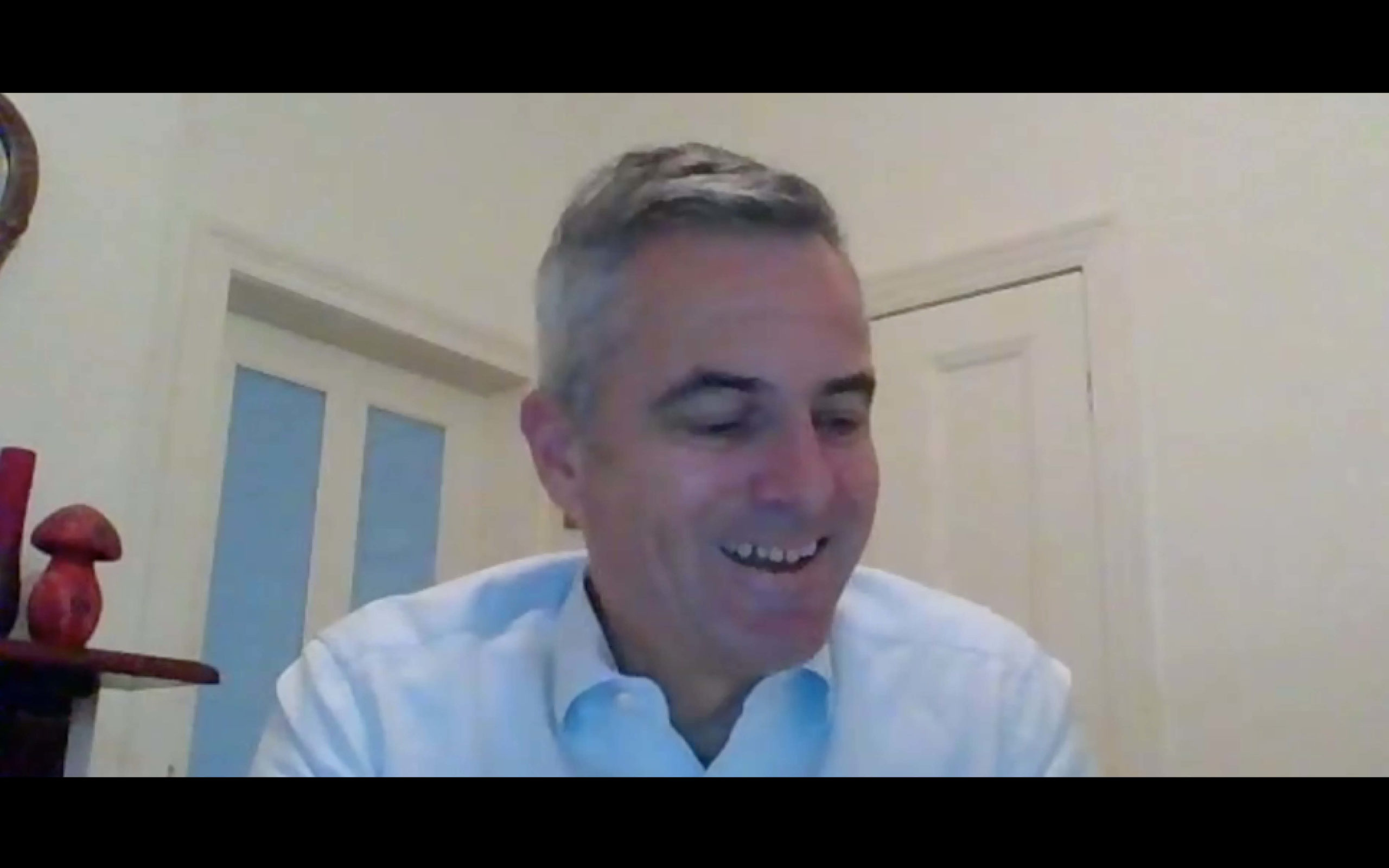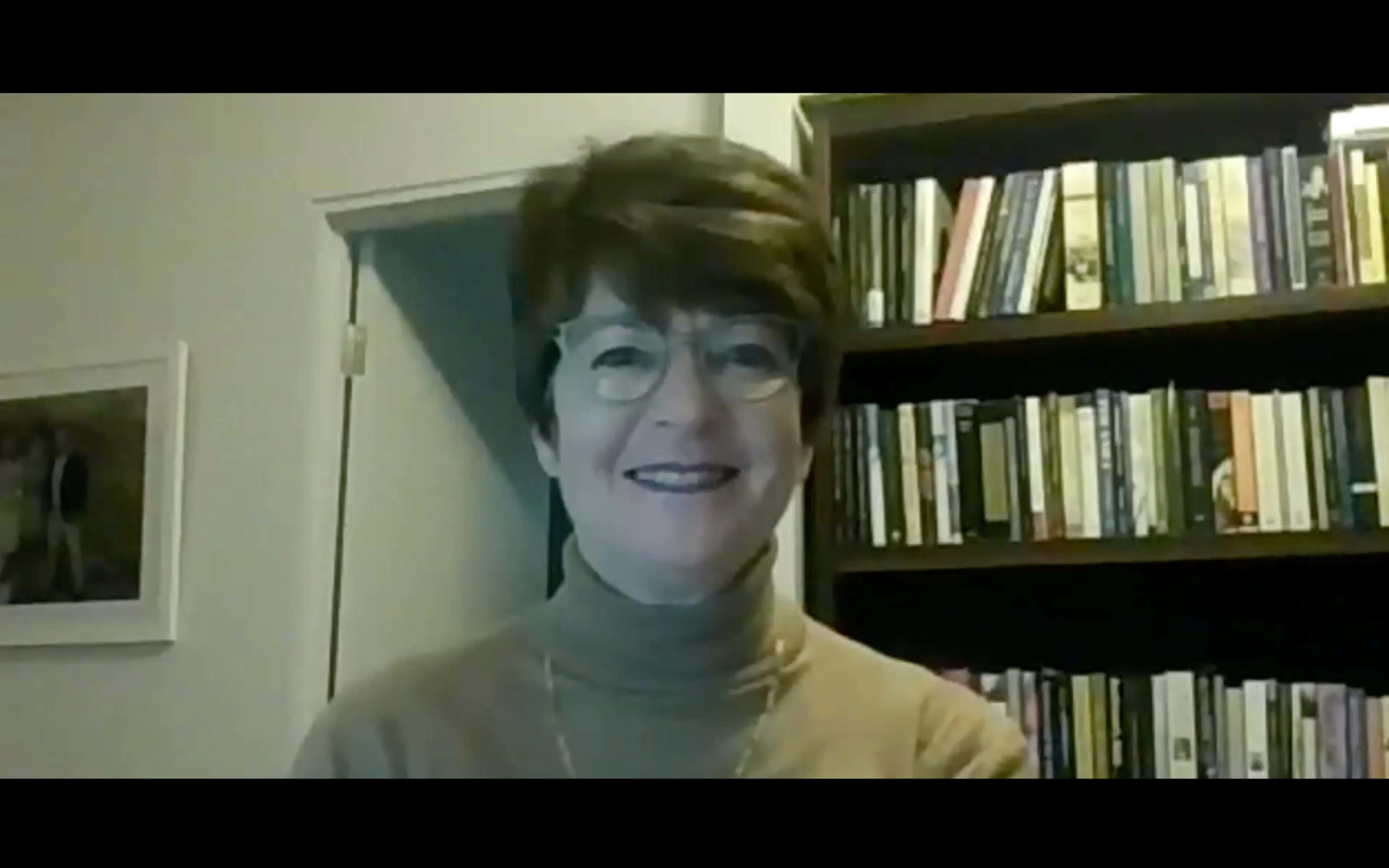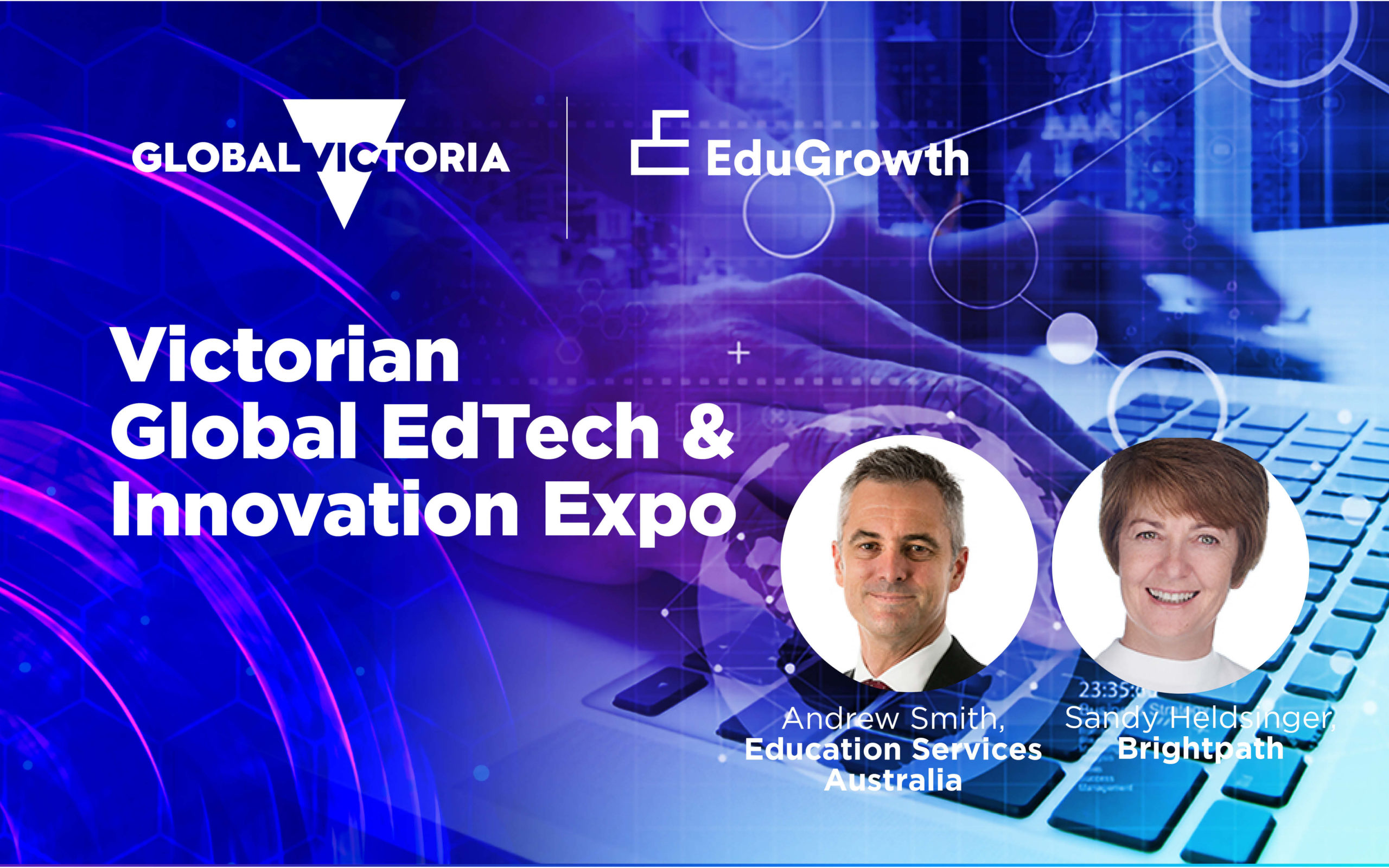Victoria is a leading Australian EdTech ecosystem with deep capability that can support learners across the globe. The Victorian Global EdTech & Innovation Expo was an initiative run in partnership with Global Victoria to promote Victorian EdTech capability to a global audience.
This session looked at the rapid adoption of technologies to aid online teaching and learning practice as a result of COVID-19. The discussion highlighted Australia’s expertise in remote learning and the opportunity for enhanced teacher effectiveness from the ongoing use of technology in the classroom and beyond.

Andrew Smith, CEO Education Services Australia
Education Services Australia is a not-for-profit education technology company owned by all the Australian Ministers of Education. ESA develops and deploys education infrastructure and resources at a National level, and provides technology based services to the education sector. He is a past Vice President Engagement, Swinburne University and past CEO of Australian Council for Private Education and Training.

Dr Sandy Heldsinger, CEO and Founder Brightpath Assessment
Sandy is an academic, author and EdTech entrepreneur. She developed the central components of the Curriculum Outline for Western Australia’s School Curriculum and Standards Authority. She has developed a wide range of resources, including reporting software to support schools in using assessments to improve student performance and co-authored What teachers need to know about assessments and reporting, published by the Australian Council for Educational Research.
Victorian Global EdTech & Innovation Expo
In-Conversation
themes
The opportunity in change
It was just two months ago that Australian education flipped to mass delivery of school education online. Now, as Australian schools begin the re-opening process, we look at the opportunity from this fundamental change to education as we have known it.
Education communities have negotiated the most significant change in their work practices, in living memory, as they moved to support remote learning. It happened so rapidly, and it should change how we think about delivering education in the future and feed into policy development and innovation.
Lots of teachers and school leaders recognise what has worked well for them, and their students, and it is this reflection that will see teaching practice of the future merge the best aspects of both models.
Rapid upskill in teacher capability
What we witnessed during this time is an enormous increase in teacher capability; the rapid upskilling of the teacher workforce and a greater confidence they have in the use of technology to aid their teaching practice.
An appetite for education technology
This all provides a ready environment for the widespread adoption of technology in the classroom and beyond. While the effective use by teachers of technology to aid and enhance learning outcomes is at an all-time high, so should be the appetite for school leaders to embrace the efficiencies that technology can provide to all aspects of schooling. Creating a significant opportunity to learn about a school’s interaction with technology, how it is adopted or implemented in the classroom, and how this can inform how education technology is designed and deployed.
Supporting a new style of learning
There is strong anecdotal evidence that this period of learning-from-home has re-engaged a specific cohort of students. A cohort that struggled with the traditional environment and had previously dis-engaged. Conversely, It is also recognised that some students, who thrived in a face-to-face learning environment, have struggled. This highlights the presence of a learning continuum, and that learning effectiveness can be vastly different for different students.
So there is an opportunity to borrow from the expertise of our long established distant learning providers and incorporate practices into schools for the benefit of those students who are better suited to, and thrive from this alternate style of learning.
A new era of parental engagement has also emerged; as parents have a better understanding of what’s involved in educating their children, and as schools have had to communicate effectively and timely, with their schools’ families. There is potential to continue engagement with parents, retain their attention and ongoing investment in their child’s learning and, at the same time, extend learning beyond the classroom.
Leveraging expertise in distance learning
Australia is a vast continent, delivering distance education to students in all corners of the country, even in the most remote areas of the outback. Understandably, and given the time-pressure and scale of the movement to online education delivery, it is acknowledged that we have not properly consulted, engaged or adopted the expertise of our most experienced distance education practitioners. Australia is a leader in distance education, the School of The Air, specifically, is known to adopt cutting edge technologies, as they become available to engage their high school students with significantly greater impact.
Data privacy and security paramount
Education leaders take their duty of care for students in the digital environment as seriously as they do their duty of care in the physical environment. Close partnerships are forming between education technology providers and educators through an increasing commitment to safety, privacy and security by design. Product developers and providers must put privacy and data security at the centre of their design work and should do so with the age of users in mind. Privacy by design does not look the same for a 6yo as it does for a 10yo or a 15yo.
Almost every aspect of a student’s education is, or will be, impacted by digital technology. It is the responsibility of all stakeholders to create a digital education world in which children can flourish and do so safely and with confidence.
The Victorian Global EdTech & Innovation Expo, supported by Global Victoria, was a virtual conference on 14, 19, 21 May 2020.

